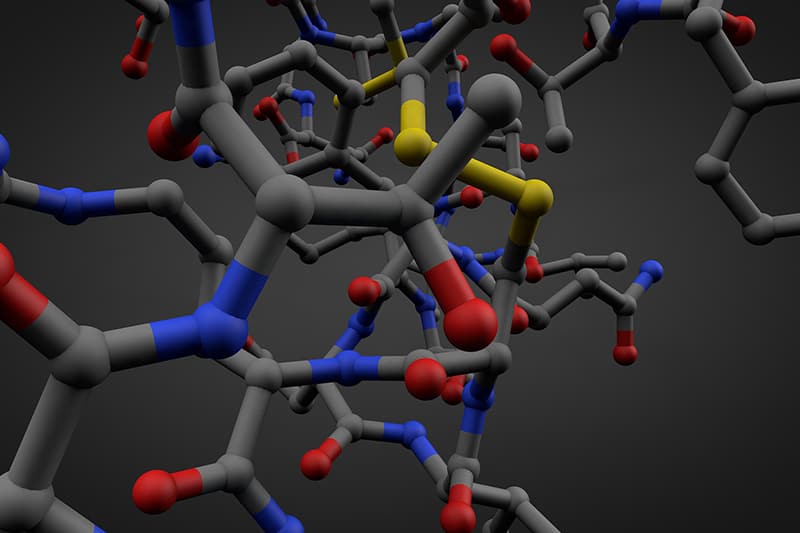Click here to get this post in PDF

Polymers are formed when molecules from simple compounds are joined together. This process of the molecules coming together is called polymerization. Polymer chemistry is the science behind this process. While it may seem quite simplistic, there are numerous ways and types of molecules that can join together, creating a wide range of different end products. Take a closer look at how this happens.
The Creation of Polymers
The term polymers refers to “many parts,” as the word stems from the Greek language. The molecules that make up the polymer are called monomers, or “one part” in Greek. Think of a polymer as a chain made up of various links. Each of the links on the change is a monomer. Each one of the monomers can be very simple. They can also be more complex. The simplest of monomers are made up of just an atom or a couple of atoms. The more complicated links in this change can be made up of numerous atoms and even structures that are a ring shape that contain many more atoms.
In natural polymers, each of the links in the chain can be different from the other links in the chain. That includes natural polymers like DNA or protein. Synthetic polymers, which are man made, have links that are each identical to each other, one link after another.
Polymers can become even more interesting. They can form branching networks instead of simple chains. These more complex polymers form unique shapes. The molecules in them are larger, so large in fact that they are often called macromolecules. Within these chains are thousands of atoms.
How Do These Chain Links Come Together?
There are many other components and differences in polymer chains. How do they come together? What process encourages this?
There are two main ways polymers are formed. One method is called addition. The second is condensation polymerization.
Addition
In the addition method, an initiator or catalyst reacts with the initial monomer. The result of this is a reaction in which the monomer attaches to the initiator. This creates an unsatisfied bond. That unsatisfied bond is then able to react to another monomer. When it does, it adds that monomer to the chain. The process continues over and over again. Ultimately, two chains will then combine. Another outcome can be that another initiator binds to the end of the chain. If this happens, it will terminate the chain.
Condensation Polymerization
The second method is significantly different. In this method of forming a polymer, a monomer has an exposed H (hydrogen) atom on it. This binds to another monomer that has an exposed OH (oxygen-hydrogen) atom. When these two components come together, it creates the release of water – that’s because the H combines with the OH to create H2O, or water. In this method, a small molecule is eliminated or lost in the process. This is normally water.
There are many examples of polymers like this. Two types of condensation polymerization results include polyamides and polyesters. There are many other forms of them.
In addition to polymerization, the monomers come together as a result of a catalyst, which places some type of exerted control over the structural details. This creates the new polymer. In condensation polymerization, by comparison, every step in this process of polymerization creates a molecule of some type of simple compound. As noted, this is often water. In all situations, there is some type of formation of a byproduct in this method.
Understanding Polymer Structure
Polymers start with a basic chain of bonded links. This bonding is a chemical process. This initial chain of links is often referred to as the backbone. Many polymers will have secondary parts that hold on at various parts of the links. Sometimes, these dangling pieces are just a single atom. Other times, they can be larger groups of atoms. These are called pendant groups. Think of them as a pendant that is hanging off a bracelet.
What makes these pendants important is that they are able to interact with other polymers within itself as well as within the environment. In some situations, these pendant groups will hang loose from each other. Other times, they will connect two chains to each other. In this way, the pendants are creating more of a ladder formation where they act as the rung or steps in the ladder and join two chains to each other.
In these situations, a chemical bond works to hold these atoms together. Most atoms can create two chemical bonds like this to create the chain.
What’s very interesting about polymer chemistry is that this process has to happen over and over again to create any type of actual product. That is, these chains and links may grow in order to form fibers. It takes at least 100 monomer molecules to combine to make any type of physical property that may be desirable. That includes things like high tensile strength or elasticity. Many times, a single molecule of a polymer will contain thousands of monomer units.
Super Powering a Digital Supply Chain with Business Intelligence
What makes polymerization so unique is that stable covalent chemical bonds form between the monomers. This is what makes it different from processes like crystallization where numerous molecules come together due to other forces.
It is the unique components of polymers that help to make the end products desired. The formation of polymers may be complex, but it plays out millions of times to create the desired result. This is what makes polymer chemistry so fascinating.
Image Source: Pixabay.com
